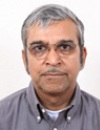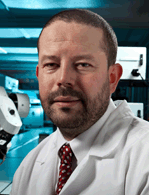|
Protein and Antibody Arrays Continued |
| |
08:30 | Indigenous Development of Membrane Based BioChip Cassette and Biochip Arrayer System for Making Protein Microarrays
Ratnesh Sengar, Scientific Officer, Bhabha Atomic Research Centre, India
Indigenous development of a bio-chip cassette and arrayer system for producing the antibody based bio-chip for in vitro simultaneous quantitative detection of a combination of thyroid related hormones using polycarbonate (PC) track-etched membranes (TEM) as a novel substrate. |
|
Liquid Chromatography and Mass Spectrometry |
| |
09:00 |  | Keynote Presentation Bioinformatics Aspect of Label-Free LC-MS Comprehensive Profiling Technology
Peter Horvatovich, Assistant Professor, University of Groningen, Netherlands
Overview on current state-of-art and challenges of data processing methods for label-free LC-MS comprehensive profiling technology of complex biological samples. |
|
10:00 | Qualitative and Quantitative Analysis of Bioactive Alkaloides in Berberis and Mahonia Roots and use of PCA for Marker Identification for Quality Control.
Brijesh Kumar, Senior Principal Scientist, Central Drug Research Institute, India
The DART/Q-TOF/4000Qtrap LCMS techniques have been applied for the profiling of alkaloids in Berberis and Mahonia species. Chemical profiling of leaf, stem and root has been done successfully. PCA analysis has shown that DARTMS data can be used to differentiate these alkaloids containing plant species. This will help in identification of plants used for drug preparation and for the effective quality control in future. |
10:30 | Coffee Break & Networking in Exhibition Hall |
11:15 | Advances in Metabolite ID Strategies Using Hyphenated LC-MSMS Techniques
Umesh Pawa, Managing Director, AB Sciex, United Arab Emirates
A talk elaborating strategies and workflows for simultaneous Metabolite Identification and quantitation using hyphenated LC-MS/MS technologies and novel scan modes in current day instrumentation. |
|
Applications of Spectroscopy |
| |
11:45 | Ethyl Glucuronide as a Biomarker of Alcohol Abuse
Bharat Venkatesh, Junior Scientific Officer, National Institute of Mental Health and Neurosciences, India
Sensitive and reliable analytical GC-MS method for determination of EtG in urine and serum was developed and validated. The performance of this method is sufficient to measure low EtG concentartion in both matrices. |
12:15 | Lunch & Networking in Exhibition Hall |
13:30 | Poster Viewing Session |
14:15 |  | Keynote Presentation Automated Sample Preparation for MALDI MS Analysis in Clinical Proteomics
Rainer Cramer, Professor, University of Reading :(, United Kingdom
Matrix-assisted laser desorption/ionization (MALDI) mass spectrometry (MS) is one of the two main ionization techniques in biological MS. Its advantages are easy off-line sample preparation, high tolerance to contaminants and additives, and high speed analysis. These properties are highly desirable for automated large-scale clinical proteomic analysis. Thus, MALDI MS has already been used extensively in areas such as biomarker screening and discovery, biotyping of bacteria and other disease microbes, as well as imaging of clinical specimens. This talk will provide an introduction into MALDI and its potential for clinical analysis, and an overview and future outlook of its application in large-scale automated clinical proteomics. |
|
15:15 | Coffee Break & Networking in Exhibition Hall |
|
Advances in Biotechnology |
| |
16:15 | Immunogenicity and Pharmacokinetics Assessment of Protein Biotherapeutics: An Overview
Mallikarjun Dixit, Laboratory Director, Clinigene International Ltd, India
With the advent of Biotechnology, more and more drug products currently available in the market are biotech derived human recombinant protein biotherapeutics which have replaced the animal derived drug products. This has helped in global availability of quality drug products at a competitive price with very little or nil side effects. To utilize the growing demand for the biotechnology derived drug products, many multinational agencies have established the biopharmaceutical units in different parts of the world using Recombinant DNA technology. |
16:45 | Close of Conference |



